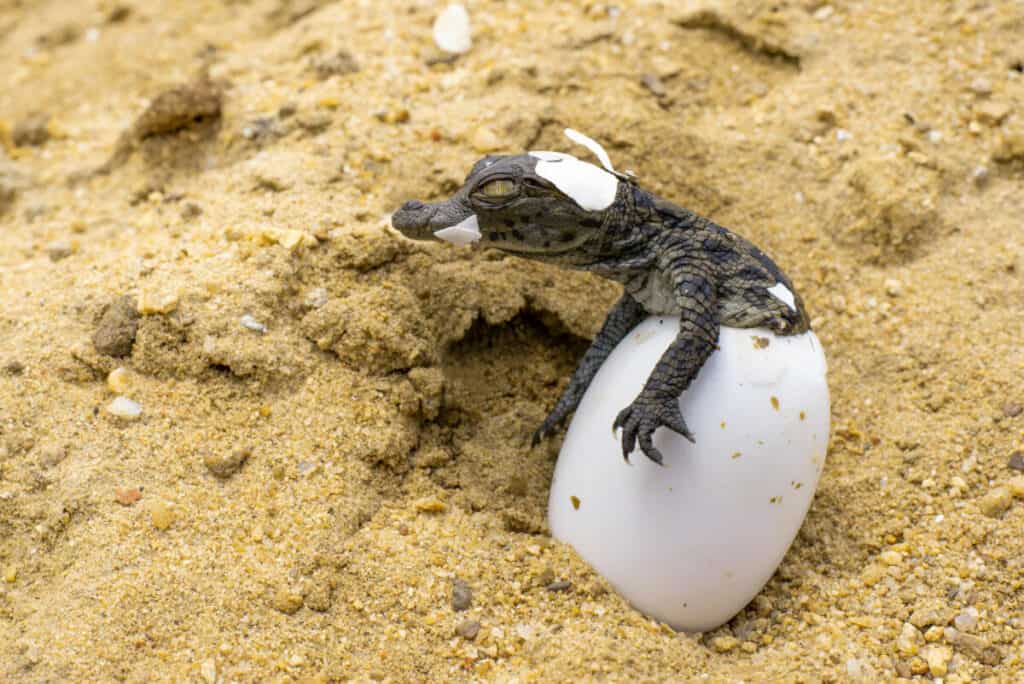Lizards are a diverse group of reptiles that can be found across the world in a variety of habitats. Most lizards reproduce by laying eggs, so lizard eggs are a common sight in areas where these reptiles live. Here is an overview of what lizard eggs typically look like.
Typical Characteristics of Lizard Eggs

- Shape: Lizard eggs come in a variety of shapes, but they are often oblong or elliptical. Some species lay more spherical eggs.
- Size: Lizard egg sizes range considerably depending on the species. Some small lizards may lay eggs that are just a few millimeters long, while large lizard species can produce eggs over 10 centimeters long. Most are between 1-5 cm long.
- Color: The eggs may be white, tan, pink, or pale blue. Some species have darker speckles or blotches on the eggs.
- Shell Texture: The shell is leathery and flexible when first laid, then gradually hardens. It has a smooth, matte texture rather than a shiny one.
- Clutch Size: The number of eggs in a clutch ranges from just 1-2 eggs for some species to over 60 for others. Most commonly, lizards lay between 2-20 eggs per clutch.
Nesting Behavior and Egg-Laying
Most lizards excavate nests or lay their eggs in pre-existing holes and cavities, such as burrows, rock crevices, underground tunnels, or hollow logs. This protects the eggs from predators and regulates temperature/moisture levels. Depending on the species, lizard eggs may be laid:
- In a shallow nest underground
- Inside a termite mound or ant hill
- Under loose bark or fallen logs
- In abandoned rodent burrows
- In rock piles or crevices
- In tree cavities
- Directly into loose soil or leaf litter
The female deposits the eggs then abandons them. There is no further parental care after egg-laying.
Incubation Period
Once laid, lizard eggs are on their own. Incubation periods vary between 4-12 weeks depending on the species and environmental temperatures. Warmer temperatures speed up incubation. Ideal incubation temperatures range from 75-90° F for most lizards.
Eggs of different species may overwinter underground and hatch the following spring if the climate is too cold for immediate incubation.
Hatchlings
When lizard eggs hatch, a fully formed baby lizard emerges. Lizard hatchlings are miniature versions of adults, often just 3-5 inches long at first. They are immediately independent and must fend for themselves.
Hatchling lizards are vulnerable to predators, so they often stay hidden in vegetation for the first few weeks until they grow larger. Their growth rates depend on food availability, temperatures, and the lizard species.
Examples of Lizard Egg Variety
To illustrate the diversity of lizard egg types, here are some details on the eggs of a few common lizard species:
Leopard Gecko
Lizard species: Leopard geckos are small lizards from Asia.
Egg description: The eggs are white and elongated, about 1 inch long. They are laid in clutches of 2 eggs. Leopard geckos lay eggs even without mating.
Green Anole
Lizard species: Green anoles are small, bright green lizards native to the southeastern United States.
Egg description: Females lay single white or pale pink eggs that are about 0.6 inches long. They are usually laid in the soil or hidden under debris.
Bearded Dragon
Lizard species: Bearded dragons are medium-sized lizards native to Australia.
Egg description: Their eggs are white and oblong, about 1.5 inches long. Females dig nests in the dirt to deposit 20-60 eggs per clutch.
Marine Iguana
Lizard species: Marine iguanas are a species found only in the Galapagos Islands.
Egg description: Females lay 3-6 eggs in sandy underground burrows. The eggs are spherical and about 2 inches in diameter with a leathery, white shell.
Gila Monster
Lizard species: Gila monsters are a venomous lizard species found in the southwestern United States.
Egg description: The female lays 2-12 eggs that are elliptical, about 1.5 inches long, and have a leathery, pinkish-white shell.
Komodo Dragon
Lizard species: Komodo dragons are the largest lizard species, reaching over 10 feet long. They live on several Indonesian islands.
Egg description: Females lay 15-30 eggs per clutch. The eggs are white, oval, and about 5 inches long. They are deposited in an underground nesting chamber.
Conclusion
In summary, lizard eggs come in a variety of shapes, sizes, and colors depending on the species. They are laid in clutches that are often hidden underground or in sheltered microhabitats. After egg-laying, the female abandons the eggs and the hatchlings are independent immediately after emerging weeks later. Understanding the egg-laying habits of different lizards provides insight into the reproductive strategies of these diverse reptiles.
FAQs About What Do Lizard Eggs Look Like
Do all lizard eggs have the same size and shape?
No, lizard eggs vary in size and shape. Some are elongated and leathery, while others are spherical and rigid. Size can range from a few millimeters to a couple of centimeters, depending on the species.
What colors are lizard eggs typically?
Lizard eggs come in a range of colors. Common colors include white, off-white, and pale shades of yellow or green. The color may provide camouflage in the specific environment where the eggs are laid.
Are there variations in lizard egg appearance among different species?
Yes, different species exhibit diverse egg appearances. Some have translucent shells, while others are opaque. Colors, patterns, and textures can differ based on the species and their adaptations.
Do lizard eggs have any distinct markings or patterns?
Yes, some lizard eggs have markings or patterns that serve as camouflage. These patterns might blend with the surrounding environment, offering protection against predators.
How can I differentiate lizard eggs from other types of eggs?
Lizard eggs can be distinguished by their size, shape, and texture. Unlike bird eggs, lizard eggs are leathery or flexible, rather than hard. They vary greatly in size



